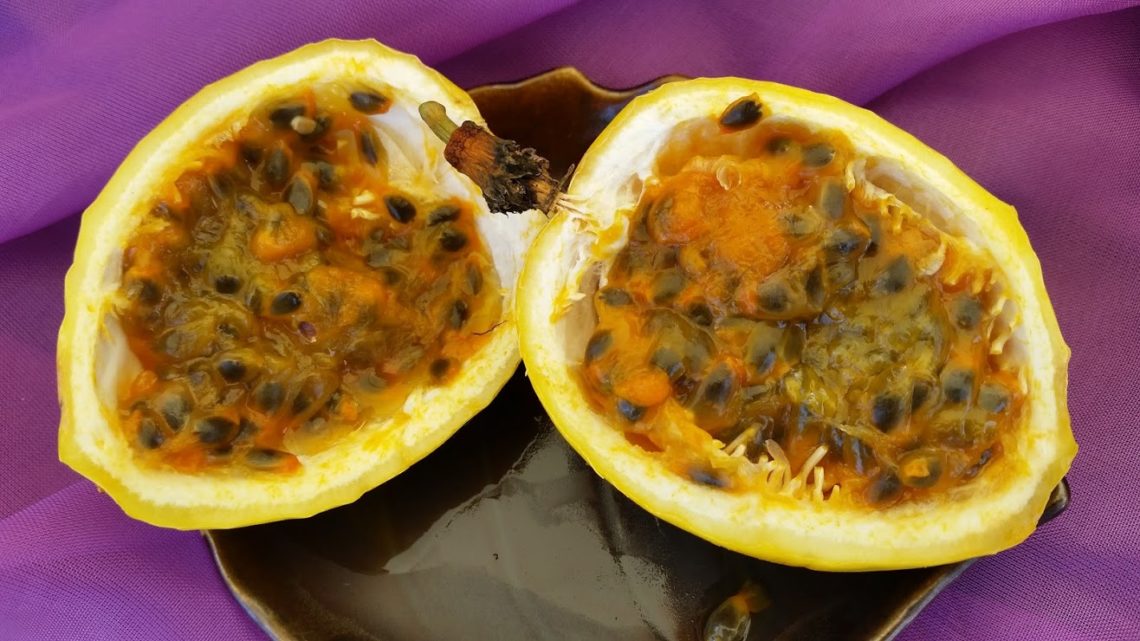
This is a shipping order. Switch to local pickup?
This is a pickup order. Switch to shipped?

Common Name: Liliko’i (lee-lee-co e)
Passion fruit
Scientific Name: Passiflora edulis Sims
Flower Color: White, purple, and yellow
Fruit Color: Yellow and purple varieties
Habitat: Yellow: Sea level – 2,000 ft
Purple: 2,000 ft – 4,000 ft
In the 16th century, when Christian missionaries landed in South America, the passion flower was the plant that signified their success. They named it “Flor de las cinco llagas” or “flower of the five wounds” after its distinctive purple flower. They believed that the flower symbolized the death of Christ; the five petals represented the disciples (minus Peter and Judas), the corona symbolizes the crown of thorns around Christ’s head, and other features were a symbol of the wounds, nails, and whips used on Christ.
Today, passion fruit is grown nearly everywhere in the tropical belt but known by a variety of different names. Its common name is Maracuya in Ecuador and Brazil, Parcha in Venezuela, Lilikoi in Hawai’i, and Chinola or Parchita in Puerto Rico.
Passion Fruit was introduced into Hawaii in 1880 and it quickly became popular in home gardens. It naturalized in Hawaii’s almost perfect climate and, by 1930, could be found wild on all the islands of the Hawaiian chain.
While there are over 500 species of Passiflora only one of the species can be called passion fruit. Within this species (Sims) there are two distinct types of passion fruit, one that produces a purple skinned fruit and another, that produces a yellow skinned fruit. In Hawai’i the two varieties are commonly called purple Liliko’i and yellow Liliko’i. Because the purple variety is subtropical while the yellow variety is tropical, Hawai’i tends to possess more of the yellow than purple Liliko’i.
Both varieties of passion fruit yield a delicious orange colored juice. Passion fruit is farmed in many countries and the juice extracted into a variety of canned drinks, concentrates, and butters. Passion fruit has a slight tart and citrus taste. Fresh passion fruit contains vitamin C (36%), dietary fiber (42%), B vitamins riboflavin (11%) and niacin (10%), iron (12%) and phosphorus (10%) in significant percentages of the Daily Value.
The most striking thing about the passion fruit vine is the flower. These beautiful flowers are beyond description. The flowers, up to three inches wide, grow individually all over the vine. These fragrant flowers each have five white petals that form the base, which has on top a vivid purple streaked and dotted center. Coming up from the center are 5 bright yellow stamens with large ends and shooting outwards from the center are very fine, whitish ‘hairs’ to complete this bizarre but beautiful flower.
As the flower ages it begins to close and harden into a young fruit. The fruits start out as a dark purplish-green nut shaped fruit that matures to about a 3 inch wide fruit that becomes purple or bright yellow. Within the fruit are a delicious pulpy juice and many small black seeds.
Both the juice/pulp and seed is edible, but the fruit must be mature, as toxins exist in the immature fruits. While the seeds are edible, it is the fruit that is mostly used. The pulp is normally pressed through a strainer and then bottled as a concentrate.